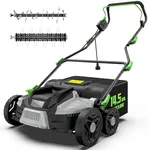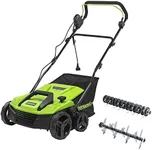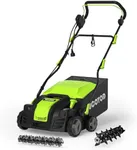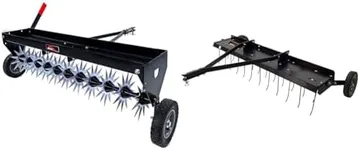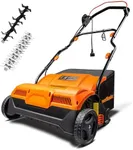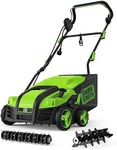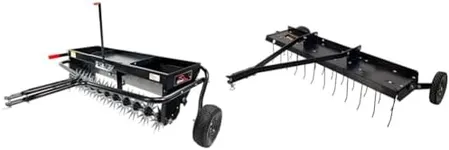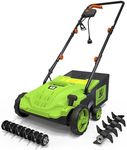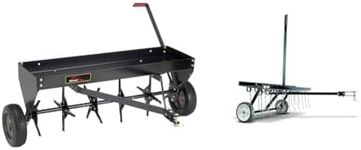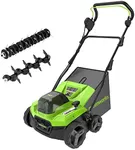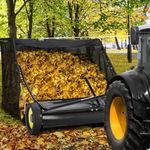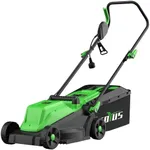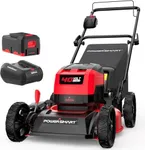Buying Guide for the Best Dethatchers
Choosing the right dethatcher for your lawn is crucial to maintaining a healthy and lush yard. A dethatcher helps remove thatch, which is a layer of dead grass, roots, and debris that can build up on your lawn over time. Too much thatch can prevent water, nutrients, and air from reaching the soil, leading to unhealthy grass. When selecting a dethatcher, consider the size of your lawn, the type of grass you have, and how often you plan to use the machine. Here are some key specifications to consider when choosing a dethatcher.Type of DethatcherThere are mainly three types of dethatchers: manual, electric, and gas-powered. Manual dethatchers are best for small lawns and require physical effort to operate. Electric dethatchers are suitable for medium-sized lawns and are easier to use but require access to a power source. Gas-powered dethatchers are ideal for large lawns and heavy-duty tasks, offering more power and mobility but are noisier and require more maintenance. Choose the type based on the size of your lawn and your physical capability.
Working WidthThe working width of a dethatcher refers to the width of the area it can cover in one pass. This is important because it affects how quickly you can complete the job. A wider working width means fewer passes are needed, which is ideal for larger lawns. Working widths typically range from 12 inches to 40 inches. For small lawns, a narrower width (12-20 inches) is sufficient, while medium to large lawns benefit from a wider width (20-40 inches). Consider the size of your lawn to determine the appropriate working width.
Tine Material and SpacingTines are the metal prongs that dig into the thatch and pull it up. The material and spacing of the tines are important for effective dethatching. Tines can be made of steel, plastic, or other materials. Steel tines are more durable and effective for heavy-duty dethatching. The spacing between tines affects how thoroughly the dethatcher removes thatch. Closer spacing is better for dense thatch, while wider spacing is suitable for lighter thatch. Choose tine material and spacing based on the condition of your lawn and the amount of thatch present.
Adjustable Depth SettingsAdjustable depth settings allow you to control how deep the tines penetrate the soil. This is important because different lawns and thatch levels require different depths. Shallow settings are suitable for light dethatching, while deeper settings are needed for thicker thatch. Having multiple depth settings gives you flexibility to adjust based on your lawn's needs. Look for a dethatcher with easy-to-adjust depth settings to ensure you can customize the dethatching process for optimal results.
Collection BagSome dethatchers come with a collection bag that gathers the removed thatch, making cleanup easier. This is important for convenience and efficiency, as it saves you the time and effort of raking up the thatch manually. If you prefer a cleaner and quicker dethatching process, look for a model with a collection bag. However, if you don't mind raking or have a composting system in place, a collection bag may not be necessary.
Weight and ManeuverabilityThe weight and maneuverability of a dethatcher affect how easy it is to use. Lighter dethatchers are easier to push and maneuver, especially on uneven terrain or around obstacles. However, heavier dethatchers may provide more stability and better penetration into the thatch. Consider your physical strength and the layout of your lawn when choosing the weight and maneuverability of the dethatcher. If you have a lot of obstacles or a hilly lawn, a lighter and more maneuverable dethatcher may be more suitable.
